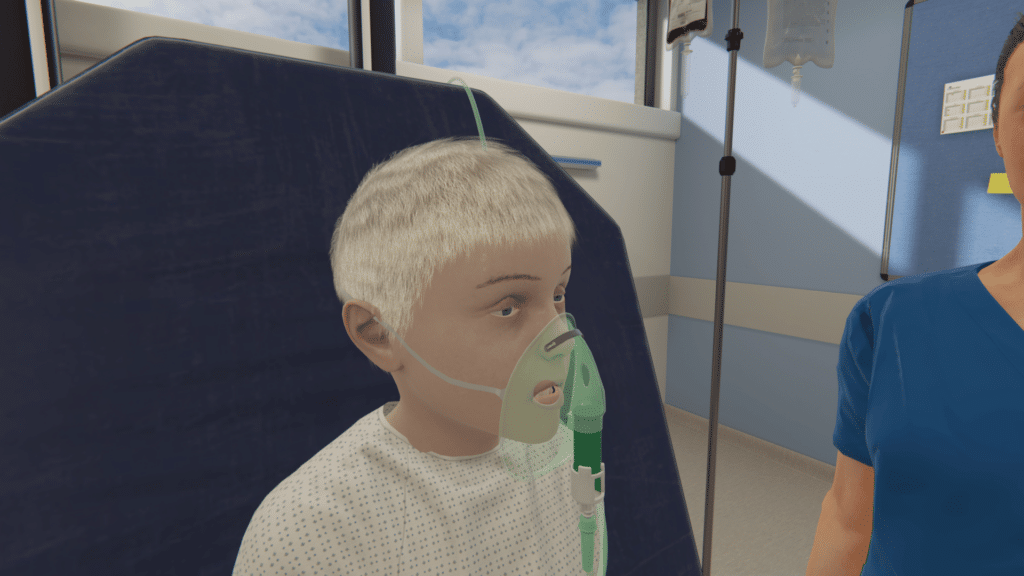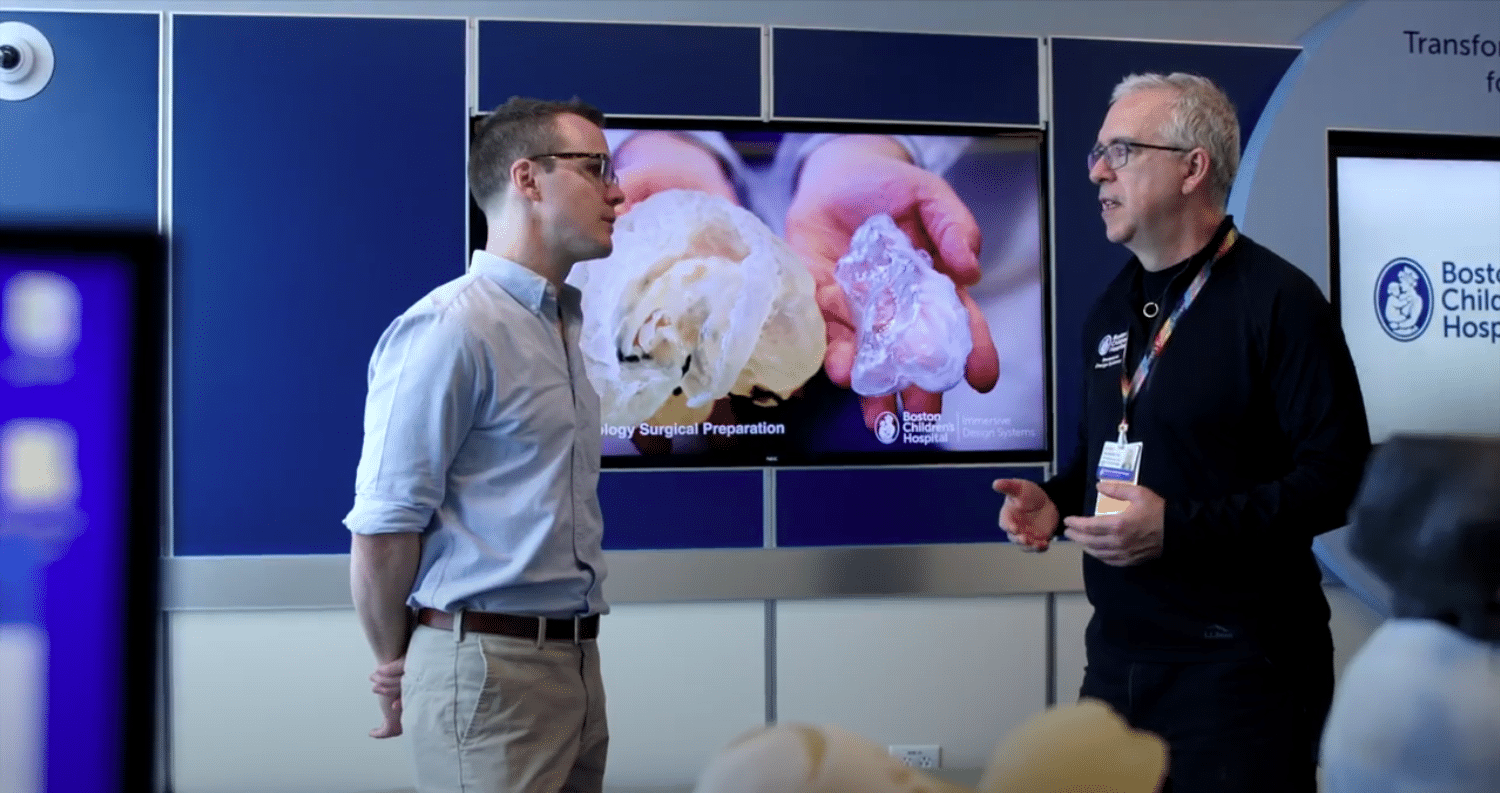Boston Children’s Hospital, renowned as one of the premier pediatric institutions in the United States, consistently upholds and advances its standard of excellence annually.
As a top-performing hospital system, the teams at Boston Children’s are drivers and innovators who are consistently moving healthcare training forward for the betterment of patient care.
Within subspecialty units, like the cardiac intensive care unit, standardized and repeatable training is key to helping newly onboarded staff develop familiarity with departmental and organizational processes while implementing life-saving interventions for their patients.
Developing, maintaining, and honing onboarding training programs often means consistently evaluating the effectiveness and efficiency of the process. For the team at BCH, continuous improvement is a theme found across this prestigious organization.
Advanced technology like virtual reality has been brought into different BCH departments. It continues to expand across the hospital system, being utilized in various ways depending on the department and learning objectives.
Why Boston Children’s Hospital chose VR as part of their training program
At the helm of onboarding for the cardiac ICU, Toni Imprescia is a Nurse Educator preparing new BCH nurses for the highly-specialized, fast-paced critical environment.
As a part of the training process, onboarding nurses move through modules directly relating to the type of care they’ll be providing.
Virtual reality has been a core component of the process, due in part to the quick setup & takedown, easy accessibility & portability, and the repeatable nature of VR.
These features also allow for more deliberate practice and repetitions of infrequent, high-stress clinical situations that clinicians may encounter at any time.
While physical simulation remains an integral part of the program, it comes with its own sets of limitations and challenges.
In order to prepare for one physical simulation for the cardiac ICU team, Toni notes, “I would need an engineer, I’d need a manikin, I’d need a room, I’d need other participants, and sometimes, even additional faculty.” Whereas,
“In VR, all I need is the headset.”
Virtual reality helps provide consistent training throughout the hospital “without diluting the unique aspects of each area”.
Each nurse receives an opportunity to practice and experience a given situation repeatedly, as opposed to rotating only once or twice through a group-based simulation with limited hands-on opportunity.
With no use of consumable supplies, inherent standardization, and a superior ability to match unique clinical situations that occur in subspeciality units, VR has significantly impacted how the team at Boston Children’s is conducting their onboarding training program.
Tailoring the onboarding experience
Two departments, in particular, have leveraged Oxford Medical Simulation for their staff training – the cardiac ICU and the emergency department – each curated for the experiences needed by the nurses in their respective departments.
The teams at BCH and OMS have worked in partnership to create bespoke scenarios exclusively for the team in the cardiac ICU of Boston Children’s Hospital.
These code cart modules provide a virtual environment consistent with the layout of a room in the cardiac ICU at BCH to allow new nurses to both adapt to their new workspace and practice providing specialized care while in the scenarios.
Nurses in these simulations take on the role of the decision-maker, providing care in a high-stress environment where proper dosage calculations are critical – and highly variable.
Dosages must be calculated based on the weight and age of a patient, and in the cardiac ICU at Boston Children’s Hospital, the team may work with a baby as small as 2 pounds or a teenager closer to 200 pounds. Getting the dosage right on life-saving medications for these patients is not only crucial for their outcomes, but it is also incredibly time-sensitive.
Ensuring these new nurses are provided with the opportunity to train and work through realistic emergency simulations requires high fidelity of the medium as well as a tailored simulation case that closely resembles the reality of care within the actual room of their unit.
That can be difficult to achieve with regularity from physical simulations due to time, space, and equipment costs.
Across the way, the emergency department at BCH utilizes OMS scenarios to prepare their staff for the processes and procedures more broadly treated in the department.
These existing scenarios from OMS were selected due to the narrative depth of each scenario, providing ample opportunity for trainees to practice foundational skills like information gathering, formulating potential diagnoses, and communication with the interdisciplinary team.

Implementing VR to onboard new nurses
When nurses begin their onboarding process, they receive a headset they can practice with during their shift or at home.
An ability to run clinical scenarios at home gives learners more time to engage in deliberate practice, receiving immediate feedback that can be put into practice through repeatable simulations.
For trainees who have recently graduated nursing school, this provides an additional opportunity for practicing clinical skills while learning the specific procedures at a new facility.
As a part of their training program, scenarios used in-headset are aligned with simulations that learners will engage in live in the simulation lab. The live code cart simulation, for example, is typically conducted one time with two nurses participating at once.
In VR, nurses who were unable to be at the code cart during the physical simulation are able to take the reins and conduct the session themselves, while nurses who were able to be on the cart live are able to go back and repeatedly practice that scenario.
As nurses transition from live to virtual nursing simulation, they’re able to connect concepts to practice and identify any gaps in knowledge in a psychologically safe learning environment.
Conducting scenarios within the context of the hospital room adds another layer of consistency and realism that learners may not receive from a live simulation.
While live simulations may provide a level of adaptability, it is likely to run a bit differently with each session, limiting standardization across simulations.
Jeff Jacobson, XR Lead for the Immersive Design Systems team at BCH, notes that while physical and VR simulations are two different tools, they each have their own place in healthcare education and training, meaning “trainees do best when they have a mix of both”.
He explains some of the advantages of utilizing VR for immersive training:
“The advantage of a virtual simulation is that it creates a de facto standard because it encodes the information, it’s easily repeatable, and it’s much more scalable.”
Due to the bespoke nature of the scenarios, new nurses are able to repeatedly practice modules in the rooms of the hospital, locating specific equipment and medications that they’ll need to remember and locate quickly in an emergency situation.
Nurses working within VR clinical simulations are getting in the necessary repetition for relatively infrequent situations that they’ll need to be prepared to handle in-the-moment whenever they might arise.
The impact of VR for nurses & patients
Those onboarding nurses who have had the experience in virtual reality have provided “overwhelmingly positive” feedback as they’re able to learn new skills, develop current skills, and better prepare themselves for difficult situations.
For the team at Boston Children’s, investing in staff experience at the beginning of their time with the hospital is essential for maintaining retention of team members.
Providing teaching & training that empowers learners, not only in orientation but also in continuing education, gives learners an outlet for developing their skills and engaging in that passion for lifelong learning.
Jeff and Toni both highlighted one nurse in particular, who experienced the impact from utilizing VR training firsthand when she encountered an actual code and needed to prepare medications:
“She felt much more prepared for an emergency she was in in real life, and she attributed that to her experience with the OMS code cart module.”
Specifically, the repetition of completing OMS scenarios helped her perform more quickly in the real-life environment, saving her valuable time and positively impacting a patient’s outcomes in the process.
Expanding VR use
The staff and training team at Boston Children’s Hospital have seen such significant benefits by using VR for nursing simulation that what began as a small on-site training program has now evolved so that each new learner receives their own headset that they can use anywhere they need during their orientation process.
While their experience utilizing the OMS platform has been highly impactful, the team at BCH also highlights the importance of finding a VR partner that provides the level of support and guidance that the OMS team provides.
As Nurse Educator, Toni Imprescia, notes, the partnership with OMS has been “amazing from the beginning”, and it was “incredible for me to see that dedication” from the OMS team throughout the development and implementation processes.
The team at BCH has found virtual reality to be another tool in their toolkit for onboarding, training, and investing in their staff. Looking ahead, Jeff Jacobson shares his insights for the future of virtual reality in healthcare training:
“We expect VR simulation to take its place alongside physical simulation as a standard means for new people to train in and also experienced clinicians to learn new things.”
As part of their integration of VR into their training curriculum, the BCH team plans to utilize the no-code authoring platform, OMS Create, to generate bespoke content themselves:
“What we’re really excited about now is the use of OMS Create because that will allow us to create the context-specific training which is what we really need here.”
With OMS Create, adjusting existing scenarios to meet particular departmental or organizational needs is just one way to create custom content for facilities.
“The ability to create complex, interactive, automated scenarios is unique – that is one ability that OMS Create has that none of the other softwares in the medical training space currently have.”
Utilizing virtual reality and OMS for onboarding has been just the beginning for Boston Children’s Hospital, who now look to VR as a means for competency demonstrations, reflective thinking, and custom clinical cases that can be created on the fly and easily shared.
Most recently, the BCH team have already built three scenarios utilizing OMS Create and continue to lead the charge on implementing and optimizing the use of VR for their nursing staff training.
To learn more about using OMS to enhance onboarding and healthcare training, book a demo to speak with us in more detail.

